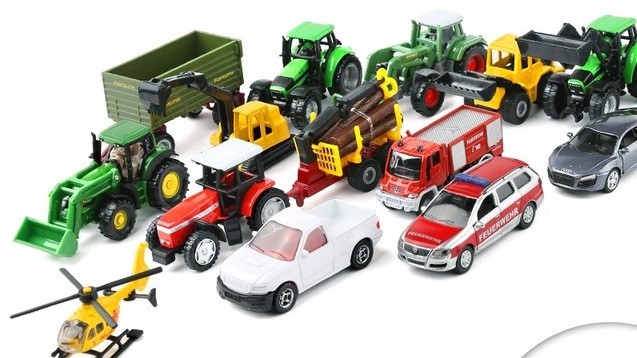Divisible and indivisible things - this is one of the main types of classification of things in civil law. However, in jurisprudence things are not considered in their physical sense, their natural properties are not revealed. Their legal regime is important here. More details about divisible and indivisible things in civil law will be described in the article.
Definition
Divisibility and indivisibility are the legal properties of things, since in the physical sense any thing can be separated. These properties, among other things, become important when the division of objects of common property takes place.
Regarding divisible and indivisible things, the Civil Code of the Russian Federation says the following.
- The first of them are those that are separated in kind so that each of the parts that became independent after the separation can still be used in accordance with its purpose. That is, to perform the same function as the whole thing. Examples are an isolated room in an apartment that is residential or part of a residential building.
- The second is things that cannot be divided in kind without changing their original economic or other purpose. Since their individual parts cannot fulfill the previous functions inherent in whole things. For example, a land plot that is smaller than the size prescribed by law.
Next will be considered examples of divisible and indivisible things.
What can be divided?
Divisible things that do not lose their functionality and original purpose at the end of the division include the following:
- various household items;
- Consumables;
- personal items;
- Food;
- building materials.
Another option is a herd of domestic animals, for example, sheep or cows, which can be divided into two or more parts. Indeed, after the section, the purpose of such a “thing” will not change.
As judicial practice shows, in the vast majority of cases, things are considered divisible.
What is not legally divided?
When we mean things that lose their purpose, value after being crushed into separate parts, that is, indivisible, then usually we are talking about:

- movable things, trucks, cars;
- any instruments, for example, such as a violin, piano, drill, hammer, jointer, saw;

- collections of stamps, paintings, wines, and other items of special value, which is framed accordingly;
- items collected in sets - furniture sets, services, thematic libraries;
- paired things - shoes, skates, skiing.
Difficult things
Considering divisible and indivisible things, it is necessary to say about another variety of the latter, about technically complex objects. They also tend to lose their value due to their disassembly. In this case, we are talking, for example, about:
- TVs
- washing machines;
- gas stoves;
- computers;
- microwave ovens.
The concept of an indivisible complex thing is easy to compose on the example of a car. Its composition includes a great many different elements. And although it is likely to disassemble it into separate parts, it will not work in disassembled form. After all, the main function of the car - the transportation of people or goods from one place to another - will be lost. Unassembled, the machine as such ceases to exist and loses its value as a means of transportation.
Which exit?

After getting acquainted with what are divisible and indivisible things, the question arises, but what about the second when dividing property?
There is an option that, by agreement between the parties, paired and aggregate items can be considered divisible. If this does not happen, then the court enters the case. The judge decides which of the disputes will be recognized as the owner. In this case, the second side relies on monetary compensation.
By decision of the judge, which takes into account the wishes of the parties, the sale of an indivisible thing is possible. After that, each of the participants in the process is paid a share of the value of the sold item, expressed in cash. As a general rule, the determination of shares occurs on a 50:50 basis.
Apartment and house

Apartment, house, land - these objects are among the most valuable, and when they are divided, the largest number of lawsuits occurs. In this regard, a number of questions arise.
For example, how to determine the divisible or indivisible thing an apartment, house, other types of housing? It is impossible to answer in one word in this case, since everything depends on the specific situation.
If the couple decided to divide the apartment, which is in their common property, having allocated parts in kind, then, as a rule, it will be quite difficult to do this because of the need to comply with a number of technical requirements. Then the living space is recognized as indivisible.
Although, in principle, such a question is considered, since a large apartment with separate bathrooms, with the possibility of isolated living, can be recognized as a divisible thing and converted into two apartments. All this is also true for a private house, which is divided in kind, which means that it is much easier to recognize as a divisible thing in practice.
Land plot

Question two: a divisible or indivisible thing land? The answer to it completely depends on the purpose for which it is used or will be used.
Divisible is a site for which there is the possibility of dividing it into parts, taking into account the following conditions. Each of the parts upon completion of the section will constitute an independent piece of land, the use of which is permitted by law without transfer to the composition of the lands of another category.
The exceptions are cases specified in federal laws. Consequently, land legislation allows only such a division of the land, after which a new land is formed, which is another object of civil law. In addition, the law may indicate the minimum size of a site for a specific purpose of use and category.
Thus, both the apartment and the land can appear in two forms, depending on the specific conditions. In some cases, they will be considered a divisible thing, and in others indivisible.
Peer review
Sometimes situations arise in which it is difficult to determine which of the two considered species the thing belongs to. In such controversial situations, the court appoints an independent examination. It facilitates the solution of the problem of determining the classification of things, taking into account all its characteristics.
So, there are forensic construction examinations conducted for objects such as lines of wires, communications, electricity, canvases of the subway, railway. We also study machine tools, production lines that make up a single complex with the building. Commodity examinations are also being conducted.
